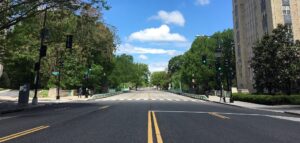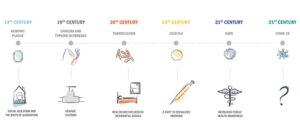Scenario 3: A Brave New World
The COVID-19 pandemic may cause a powerful paradigm-shift in the way we live. In response to the devastation of our most fragile and vulnerable, especially our seniors, disabled, and impoverished, a new awareness of the importance that public health has on all aspects of life must influence all disciplines.
Phil: “How we move may change. Planes, trains, and automobiles, walking, and biking…we will become more intentional about public transportation. How we live may change. We may need to rethink our homes after spending so much time in them. How we learn may change. We need to study the costs and benefits of online learning, to consider an improvement in distance learning infrastructure.”
Our insular, stay-at-home lives might even bring us closer to nature.
Phil: “The positive environmental impact from COVID-19 protocols may cause sweeping changes in how we design. Even in the short span of several months, we have seen pollution reduction and air quality improvement. While maintaining social distance, many of us have had a chance to renew our appreciation for parks, trails, and public spaces. This newfound awareness, as well as our increased time at home, could radically shift how and why we design. It makes me think of Perkins Eastman’s Green Line proposal from five years ago. The ambition, to turn 40 blocks of Broadway into a continuous, linear park, definitely resonates today.”
The vision to close some of our city streets and connecting public spaces: Union Square, Herald Square, Times Square, and Columbus Circle, through a linear park and walkway in New York City, as in the Green Line proposal, is just one example of ideas that may receive serious attention as a renewed demand for accessible public spaces emerges.
These grand ideas may seem daunting, but there is ample precedent to show that sweeping change is possible.
Tiffany: “The widespread cholera and typhoid infections of the 1800s caused changes in urban design to alleviate the spread of bacteria by developing better infrastructure for managing waste. As a result, the creation of boulevards and large open streets in cities came into fashion as a means to accommodate sewage piping underground. Consequently, these wider streets exposed people to more sunlight and allowed more airflow, improving public health for city residents.”
A paradigmatic shift toward public health will most certainly influence design, changing how we view infrastructure, public space, our homes, commercial districts, industry, and more.

